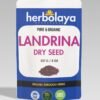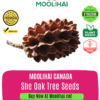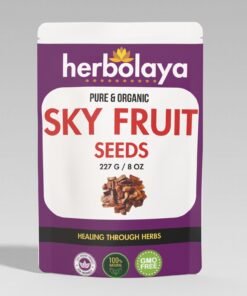-
×
 Neem Seeds
2 × $6.00
Neem Seeds
2 × $6.00 -
×
 Wild Carrot Seed
1 × $22.50
Wild Carrot Seed
1 × $22.50 -
×
 Mexican Poppy Seeds / Brahma Dandi Vithai
2 × $19.00
Mexican Poppy Seeds / Brahma Dandi Vithai
2 × $19.00 -
×
 Siruli Seeds
2 × $3.70
Siruli Seeds
2 × $3.70 -
×
 Dried Matura Tea Tree seeds / Aavarai Vithai
3 × $7.50
Dried Matura Tea Tree seeds / Aavarai Vithai
3 × $7.50
Pala indigo (Wrightia tinctoria) Seeds
$2.00
Quantity: 20 Seeds
Origin: India
Out of stock
Category: Tree Seeds
Pala Indigo Seeds (Wrightia tinctoria) – A Multipurpose Herb with Medicinal and Commercial Value
Naturally Rich in Healing & Dyeing Properties
Pala Indigo, also known by its botanical name Wrightia tinctoria, is a fast-growing small tree native to India and revered in both traditional medicine and sustainable industries. Known for its ability to produce a natural blue dye, this versatile tree offers a wide range of applications—from holistic healing to natural dye extraction and even organic farming.
At Herbolaya, we bring you pure, untreated Pala Indigo seeds carefully harvested and preserved for growers, herbalists, and sustainable living advocates worldwide.
Regional Names for Global Recognition
-
English: Pala Indigo, Dyer’s Oleander
-
Tamil: செம்பருத்தி மரம் (Sembaruthi Maram) / Wrightia Maram
-
Hindi: सूता इंद्रधनुष / Pala Indrajau
-
Malayalam: Ayani / അയനി
-
Telugu: Telupi / తెలుపి
-
Kannada: Hale Mara / ಹಲೇ ಮರ
-
Sanskrit: Shweta Kutaja
Key Uses & Benefits of Pala Indigo (Wrightia tinctoria)
1. Natural Indigo Dye Source
The leaves of the Pala Indigo tree contain indigo-yielding glucosides, which produce a natural blue dye. This makes it a sustainable alternative to synthetic dyes and an eco-friendly solution for textile and fabric artisans. Around 100–200 kg of leaves are required to make 1 kg of dye—a testament to its potency.
2. Powerful Medicinal Properties
Widely used in Ayurvedic and Siddha medicine, various parts of the Wrightia tinctoria tree are believed to:
-
Support skin health and soothe irritation
-
Aid in the treatment of psoriasis, eczema, and other dermatological conditions
-
Help relieve digestive discomforts and inflammation
Its antibacterial, antifungal, and wound-healing properties make it a valuable addition to herbal remedies and oils.
3. Edible & Multi-Use Tree
Not just medicinal—the leaves, seeds, fruits, and flowers are edible and traditionally consumed in rural India. The leaves are also used as livestock fodder, making it a multi-purpose tree for both household and agricultural use.
4. Green Manure for Organic Farming
In eco-farming practices, branches of the Pala Indigo tree are trampled into rice field soil to enrich it with organic matter and nitrogen—making it a natural green manure ideal for sustainable agriculture.
5. Ornamental & Agroforestry Value
Due to its attractive foliage and white flowers, Wrightia tinctoria is occasionally cultivated as an ornamental tree in tropical landscapes. Its resilient wood is also valued for making small tools and household items.
Why Choose Herbolaya’s Pala Indigo Seeds?
-
100% Pure & Non-GMO Seeds
-
Naturally Harvested from Native Indian Trees
-
No Artificial Chemicals or Preservatives
-
Ideal for Growers, Herbalists, Artisans & Organic Farmers
-
Backed by Traditional Wisdom & Sustainable Practices
At Herbolaya, we follow time-tested harvesting techniques to ensure our seeds retain maximum vitality. Whether you’re aiming to cultivate your own dye-producing tree, create herbal medicines, or promote regenerative agriculture, our Pala Indigo seeds are the ideal choice.
How to Use
-
Cultivation: Sow seeds in warm, well-drained soil under full sunlight. Ideal for tropical and subtropical climates.
-
Dye Extraction: Harvest mature leaves, ferment or process them to extract the deep blue color traditionally used for dyeing textiles.
-
Medicinal Uses: Consult with a certified Ayurvedic or Siddha practitioner before internal or topical use.
A Heritage Tree for Modern Sustainable Living
From the villages of Tamil Nadu to herbal gardens in the USA and Canada, Pala Indigo continues to be a symbol of nature’s resourcefulness. Whether you’re exploring plant-based wellness, traditional dyes, or regenerative farming, this extraordinary plant has something unique to offer.
Bring home the legacy of Wrightia tinctoria—naturally, with Herbolaya.
| Weight | 0.1 kg |
|---|
Show only reviews in English (0)
Be the first to review “Pala indigo (Wrightia tinctoria) Seeds” Cancel reply
You must be logged in to post a review.
Related products
Tree Seeds
$8.00 – $76.50Price range: $8.00 through $76.50
This product has multiple variants. The options may be chosen on the product page
Sale!










Reviews
There are no reviews yet.